Home Front Friday: Hello Nurse!
Home Front Friday is a regular series that highlights the can do spirit on the Home Front during World War II and illustrates how that spirit is still alive today!
Yesterday was International Nurses Day, a very special day for us here at the Museum!
Nurses are some of the most important people in our society today, and the same thing was true during the war. Before the Japanese attacked Pearl Harbor, the United States had fewer than 1000 nurses in its Army Nurse Corps. By the time World War II had come to a close, that number had ballooned to more than 50,000 women! The army established specific nurse training procedures to teach its new recruits the ropes, with special programs dedicated to anesthesiology and psychiatric treatment.
Army nurses served under enemy fire in field and evacuation hospitals, on hospital trains, hospital ships and in general hospitals overseas as well as in the United States. Because of their aid, fewer than 4 percent of the American soldiers who received medical care in the field or underwent evacuation died from wounds or disease!
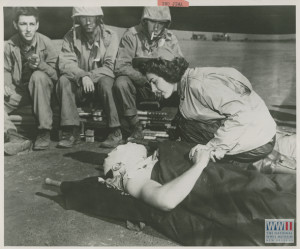
Ensign Jane Kendiegh, USNR, of Oberlin, Ohio, the first Navy flight nurse to set foot on any battlefield, bends over a wounded Marine on the airstrip on Iwo Jima, 6 March 1945
The government recognized the tremendous service that nurses brought to the war effort, and began offering free education to nursing students between 1943 and 1948. Initially, the number of Black nurses allowed to serve in the Army Nurse Corpse was limited to 160, but a public outcry forced the authorities to drop that policy in 1944. After that, more than 2000 black students enrolled in the Cadet Nurse Corps program and funding for Black nursing schools increased dramatically.
Being so close to the front, many of these army nurses suffered wartime casualties, just like the soldiers on the field. There were 201 army nurse casualties during the war, with 16 of them being caused directly by enemy forces. Sixty eight American sevrvicewomen were captured as POWs in the Pacific. However, more than 1,600 nurses were decorated for bravery under fire and meritorious service!
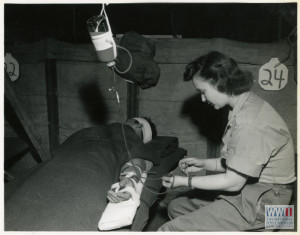
Army nurse adjusts an IV inserted into a soldier’s arm. Soldier is lying on hospital bed with head bandaged. Italy. 1944-45
Nursing provided many opportunities for women to branch out during the war. The Army Nurse Corps, the Navy Nurse Corps, and the American Red Cross all gave women the opportunity to participate, sometimes even militarily, in the war effort. Hitler, meanwhile, called America foolish for putting its women to work….which is probably why he lost the war!
In honor of National Nurses Day, we’re going to teach you how to make your very own ice packs and heating packs – the perfect remedy for sores, scrapes, and bruises!
What you need for an ice pack:
- Plastic bag
- Rubbing alcohol
- Water
- Food coloring (optional)
Steps:
- Mix one cup of rubbing alcohol with 2 cups of water. The less water you add, the less dense your gel will be.
- Place the mixture in a plastic bag. Try to get as much air out of the bag as you can – this will prevent it from popping. If you like, you can use two bags to protect further against leaks.
- It may help to add a bit of brightly colored food coloring to your ice pack so you can see what it is at a distance – and to signal to little kids that it isn’t for eating!
- Freeze! The gel inside will get cold enough to soothe while still remaining soft and pliable.
What you need for a heat pack:
- Old sock or other cloth container
- Uncooked rice or oatmeal
- Needle and thread (optional)
- Scents (also optional)
Steps:
- Fill your sock with the rice or oatmeal.
- If you like, you can add fragrance oils to make your pack smell nice!
- Either sew or tie the sock closed. (Sewing is recommended so your filling doesn’t spill out!)
- Microwave for 1-3 minutes.
Always remember to never apply these packs directly to the skin – wrap them in a washcloth or paper towel first!
Posted by Katie Atkins, Education Intern and Lauren Handley, Assistant Director of Education for Public Programs at The National WWII Museum.
- Posted :
- Post Category :
- Tags :
- Follow responses to this entry through the RSS 2.0 feed. You can skip to the end and leave a response. Pinging is currently not allowed.


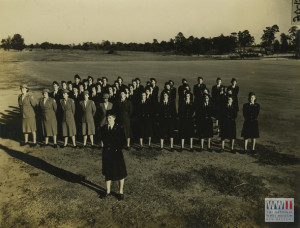
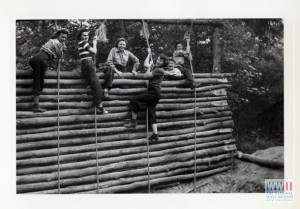
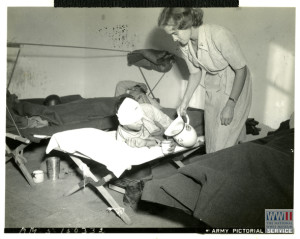


Leave a Reply